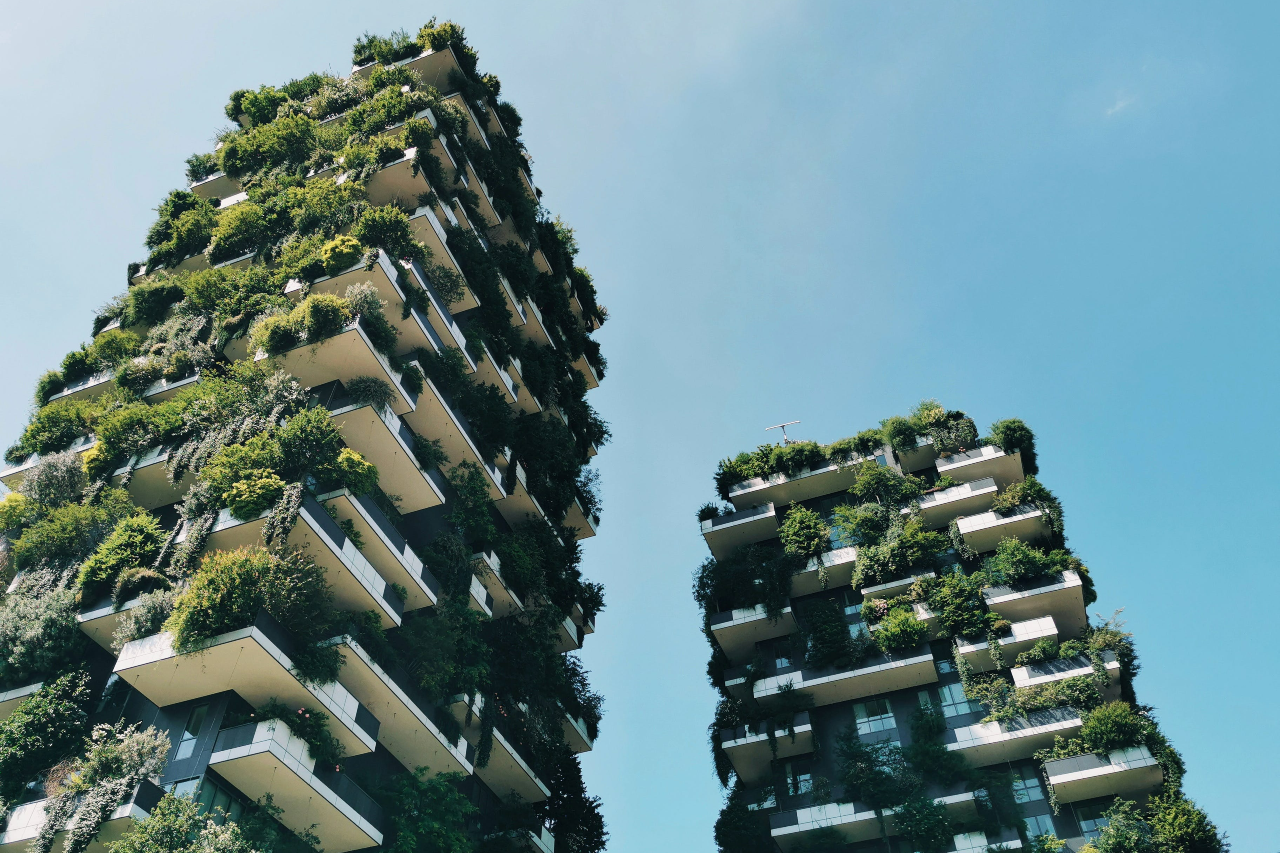In the heart of our bustling cities, where concrete jungles reign, and the hum of urban living is unending, we might be standing on the brink of a precipice.

Bosco Verticale by Sophie Otto, pexels.com
This symbolic interpretation explains the precarious state of our urban environments. When prioritising infrastructure expansion and industrial growth, we have created spaces that are volatile and prone to sustainability crises.
With skyscrapers and asphalt-covered cityscapes, the relentless march of urbanisation has edged out the lush expanses that once cradled our civilization. Though a marvel of human achievement, it takes a toll on our environment. Urbanisation has stripped biodiversity and distorts the natural equilibrium that sustains lives.
The modern megalopolis, with its overstretched resources, polluted air and water, and shrinking green spaces, stands at a critical juncture. It faces the compounded threats of climate change. It is time to come to terms with the rising global temperatures that bring a new era of natural calamities. These calamities are the same that prey on our already densely populated cities, threatening communities and critical infrastructure survival.
A Hopeful Chapter Emerges
Yet, in this narrative of environmental upheaval, a hopeful chapter is being written. The bio-integration doctrine of urban growth emerged as a proposition of a balanced coexistence with nature.
Contemporary environment researchers like Marcus Cruz tagged this nature-based solution and biological elements‘ integration into urban and architectural design as a call to action to heal the rift between human development, greed, and nature. To people like Cruz, innovations like green roofs, urban gardens, and bioretention swales are more than mere embellishments. These innovations are the strengths of resilient urban fabric, safeguarding biodiversity, and enhancing the quality of urban life.
Bio-integration concept transcends mere admiration for nature. It ushers in a fusion of technology and organic principles in an era marked by dwindling natural landscapes and overwhelming human impact. This “supra-nature” scenario challenges us to boldly envision and craft designs that harmonise with the synthetic environments we have created, drawing inspiration from the very essence of natural systems. It is a clarion call to innovatively blend the organic and the man-made, shaping a future where sustainability is woven into the fabric of our urban existence.
These thoughts are not solitary endeavours in the least. Urban futurists such as Jan Gehl, with his advocacy for human-scale cities, and Nina-Marie Lister’s scholarship in ecological design have paved the way for a future where cities can achieve the duo of vibrancy and sustainability. Their work inspires a reimagining of urban landscapes, where initiatives like Singapore’s Gardens by the Bay and Milan’s Bosco Verticale exemplify the fusion of nature and architecture.
These projects are beacons of innovation, showcasing how urban environments can flourish to mitigate pollution and combat the urban heat island effect while fostering a deep connection with nature.
Reimagining Urban Living
Urban landscape reimagining is not just a blueprint for the future but an immediate call to action. The success stories of Singapore and Milan are testaments to the transformative power of integrating green infrastructure into urban planning. Once these models are embraced, urban enclaves will have resilient capacities to environmental stressors and create more liveable, breathable spaces for city dwellers.
This is why urban opinion leaders assert that the journey towards bio-integrated urban development is a collective endeavour, requiring robust policymaking and relentless commitment from urban planners and communities to forge a path that respects the delicate balance between growth and nature conservation.
The Path Forward
The path forward is evident as we stand at the crossroads of urban development and environmental stewardship. Once city managers appreciate that integrating bio-centric design and nature-based solutions into the fabric of our cities is not just a choice but a necessity for the well-being of our planet and future generations, we will be embarking on a transformative journey towards thriving and sustainable cities.
Governments worldwide are embracing these solutions to transform urban environments into spaces that promote healthy living and a higher quality of life for their citizens. Essen, once the industrial backbone of Germany’s Ruhr Valley, exemplifies this shift. Shedding its industrial legacy, the city has blossomed into an urban green haven. By repurposing derelict factories and mines, Essen has woven vast greenery into its urban fabric, merging its industrial heritage with a commitment to sustainability and resident’s well-being.
This revolutionary journey with nature holds the promise of cities that are not merely habitable but are havens of ecological harmony, where the built environment and natural world thrive as one. In embracing these principles, we chart a course towards a sustainable, resilient, and life-affirming urban future.
The opinions expressed in this article are the author’s own and do not reflect the views of Swinburne University of Technology Sarawak Campus. Dr Jibril Adewale Bamgbade is a lecturer at the Faculty of Engineering, Computing and Science. His research interests include construct sustainability, green supply chain management, and urban planning and sustainability. Jibril is contactable at jbamgbade@swinburne.edu.my

